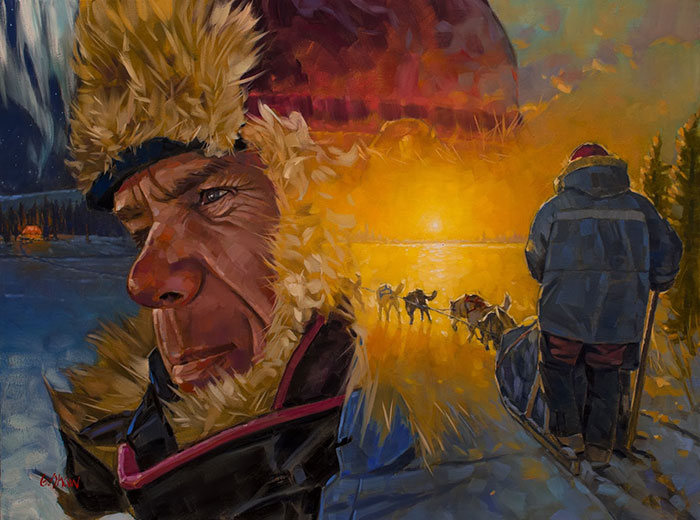Dear Artist,
Here in Canada we a have national icon. His name is Tom Thomson. For a brief period of six years he painted brilliant paintings of Canada’s north. His images are etched into the fabric of Canada’s culture. Thousands of artists have been influenced by him. His life was cut short (age 40) by a canoe accident on Canoe Lake, Algonquin Park, Ontario in July 1917. Employed as a commercial artist in an engraving and design studio, first in Seattle, Washington, and then in Toronto, Ontario, his spirit wandered from the office. His summers were spent as a fire ranger and fishing guide. In his spare time he taught himself to commit grand themes to small panels with the use of a simple little paint box that he probably made himself. From what is known of him, I’ve made a few observations that, as an artist, you might find of interest:

“Northern Lights”
by Tom Thomson, 1917
oil over a previous sketch 8 1/2 x 10 1/2 inches
Sold for $1,150,000 at Heffels, November 2007
First-hand reports say that he was forever dissatisfied with his commercial art. He worked long hours and often trashed his efforts, or tortured them with a burning cigar. He understood where his weaknesses lay. Of the few figure-studies that remain, we see that he wasn’t too good at them. His drawing was tight and theoretical. To my eye, there’s evidence of a wandering mind. It’s easy to see him looking out the window. His first few oils (1911-12) were fairly standard, horizontally formatted, scenes of distant landscape. His more “mature” work (1915-17) shows full use of the picture plane, strong verticality, confident brushwork, “art-nouveau” design and an evolving colour sense. He was a fast study. The country of his choice was rough and wild, requiring energy to be in it. His small panels resonate with this energy; juicy, honest, unpretentious, expressionistic, a delicious feeling of understatement.
His favourite book was The Compleat Angler by Isaak Walton, the earliest book that describes the art of fishing. He apparently read it over and over again. Frequent camp photographs of his guiding-life show him with a string of fish. Just as a fisherman might fill his creel with trout or pike, Thomson went into the wilderness and filled his paint box with his feelings.
Best regards,
Robert
PS: “Thomson painted not merely to paint, but because his nature compelled him to paint — because he had a message. The North Country gradually enthralled him, body and soul. He expressed the emotions of the country, its moods and passions, and all the sombreness and glory of colour. Words were not his instruments of expression. Colour was the only medium open to him.” (Dr. James MacCallum, patron of TT)
Esoterica: In the tradition of the field sketch and the final studio work, artists have an opportunity to take a fresh, real-time vision and enlarge it. While lots of examples of success with this process exist, many others show tightening and over-stylization, and the big final turns out to be less than the little sketch. Winifred Trainor (1884-1962), confidante of the Canadian painter Tom Thomson (1877-1917), wrote in an unpublished journal: “His smaller sketches from nature rang truer than his large compositions, and he preferred them.”
This letter was originally published as “Tom Thomson” on November 5, 2002. Also included is an excerpt from “Resurrection” published on April 28, 2009.
[fbcomments url=”http://clicks.robertgenn.com/tom-thomson.php”]
Featured Workshop: Donna Zagotta

Dave Olson oil on canvas, 36 x 48 inches |







